
“You can’t really criticize the moon,” one of my Wise Women yoga students observed on the heels of our yoga practice. It was the day before the new moon at its darkest stage, a time in the moon’s cycle connected with the idea of “new beginnings.”
In the days leading up to our class, the idea of “new beginnings” had taken roost in my mind as a dear and close family member struggled to find the best path for herself and her family. When I noticed the small darkened circle in the corner of June 4 on my calendar, I made the connection – new moon, new beginnings. I did a little research on the symbolism attached to the new moon only to find the idea of “new beginnings” coming up again and again.
The new moon is a time of both darkness and a sliver of light, which, like the gentle light of winter, supports a more internal focus, encouraging reflection. We can look at old goals, some of which may have been laid aside or forgotten as other aspects of our lives required more attention.
As I started reflecting on my old goals, I became aware of a new beginning I made in my practice of vedic chant. Although I had been studying and practicing chanting since 2003, my progress had been slow and disappointing. About a year ago, that changed when I decided to work via Skype every two or three weeks with a chant teacher. My chanting practice became more regular. I felt a renewed commitment to continue, and not only saw progress, but came to enjoy the work, as well. Sometimes the new beginning simply requires a new direction to move us closer to our objective.
As we reflect, we might decide to resurrect and recommit to some old goals. Some may have already been attained. With others we may find new directions reveal themselves. Some goals might have beginning after beginning in an ebb and flow, each one leading down a path we hadn’t expected when we first began. But not all old goals may seem as desirable as we had initially thought, and those we may decide to release. .
With the darkness and sliver of light of the new moon encouraging reflection, we each might ask ourselves what it is we might want to cultivate in our lives. Courage? Compassion? Joy? Patience? Balance? Or perhaps there is something more concrete we would like to attain. A daily yoga practice? Traveling? Playing the piano? Volunteering to read to children? Finding a different job?
We need only be open and patient to what may come up in our reflections, be not afraid to plot a path toward what we hope to cultivate, and move with patience and a willingness to continue to listen to ourselves and be open to modifying our direction.
The new moon days invite us to make new beginnings.
~
Below is a poem by a favorite poet of mine, inspired by the new moon.
How much it must bear on its back,
a great ball of blue shadow,
yet somehow it shines, keeps up
an appearance. For hours tonight,
I walked beneath it, learning.
I want to be better at carrying sorrow.
If my face is a mask, formed over
the shadows that fill me
may I smile on the world like the moon.
…Ted Kooser
Choosing Peace, 2016
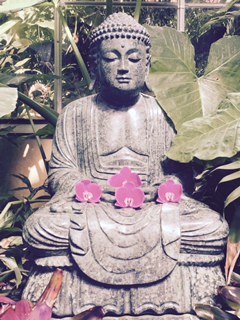 With the bluster of loud voices swirling in the public space and spewing divisiveness, bigotry, and violence, it is no wonder anyone of us might be feeling anxiety, or even a sense of powerlessness. The news has a certain seductive quality, and our minds react with a desire to know “what is happening,” “who is saying what,” and “how ordinary people are responding.” The irony is that as we are drawn into feeding this desire to know, we are feeding our anxiety and our sense that things are out of control. I know. I have been there.
With the bluster of loud voices swirling in the public space and spewing divisiveness, bigotry, and violence, it is no wonder anyone of us might be feeling anxiety, or even a sense of powerlessness. The news has a certain seductive quality, and our minds react with a desire to know “what is happening,” “who is saying what,” and “how ordinary people are responding.” The irony is that as we are drawn into feeding this desire to know, we are feeding our anxiety and our sense that things are out of control. I know. I have been there.
Most of us do not want to live with the whirling thoughts and energy that this type of activity generates in our systems. So how do we live in the world and still have peaceful minds
and hearts?
Patanjali, in Yoga Sutra II.33 speaks to the state of mental and emotional distress, doubt, confusion, and agitation that emerges when our bodies and minds are overloaded with troubling news and images. He tells us very simply: When harassed by doubt, cultivate the opposite mental attitude. In other words, give up immersing ourselves in what is causing our confusion, distress, and anxiety. Instead, take steps to cultivate what helps us to have a peaceful mind and heart.
To quiet the mind and body we have the 8 – limbs of yoga, which include the practices of yoga postures and breathing techniques. For me, most recently, as an antidote to the disturbing public discourse, I have focused on the ethical principle called ahimsa. Ahimsa is one of five ethical principles, called yama. The yama is the first limb of the eight-limbed path of yoga and its principles are to guide us in our all our relationships and with the world around us: non-violence (ahimsa), truthfulness (satya), non-stealing (asteya), moderation (brahmacarya), and non-covetousness (aparigraha).
Ahimsa is considered the most important of the yama and can also be translated as “respect for life” or “abstaining from harm” and implies cultivating an attitude of benevolence and care. So what does the practice of ahimsa look like in our lives?
To start, ahimsa requires us to examine our attitudes and behaviors toward ourselves. Do we treat our bodies, minds, and emotions with an attitude of respect? We can ask ourselves if we are making compassionate choices about our exercise, our yoga practice, our diet, our rest, the TV, media, or films we expose ourselves to, even the relationships we choose to have in our lives. Do we bring harm to our bodies by running in spite of an injured knee or regularly eat fast foods? Do we practice yoga in a way that leaves us breathless or fatigued? Do we watch TV shows or movies where we are exposed to hateful messages or violence? Are we in relationships where we are not respected?
This can be our first step toward practicing an attitude of ahimsa – becoming aware of our attitudes and behaviors toward ourselves and moving away from those which are harmful and toward those which are kind, respectful, and caring. Our self-study can then focus on how we speak and behave toward others, looking at our thoughts, our speech, and our behavior in our relationships with the same kind of questions that we asked about our attitudes toward ourselves.
In the current atmosphere of dissension, intolerance and tension in our country, the practice of ahimsa gives me hope, not just for our own behavior, but also for that of others. Patanjali tells us that when a person is firmly established in living ahimsa with respect for all beings, those who have aggressive impulses or behavior are calmed in his presence.
As more of us come to consciously cultivate ahimsa, perhaps we can act as instruments of peace in the troubled times in which we live, rather than as victims of public animosity.
The Hardest Thing…
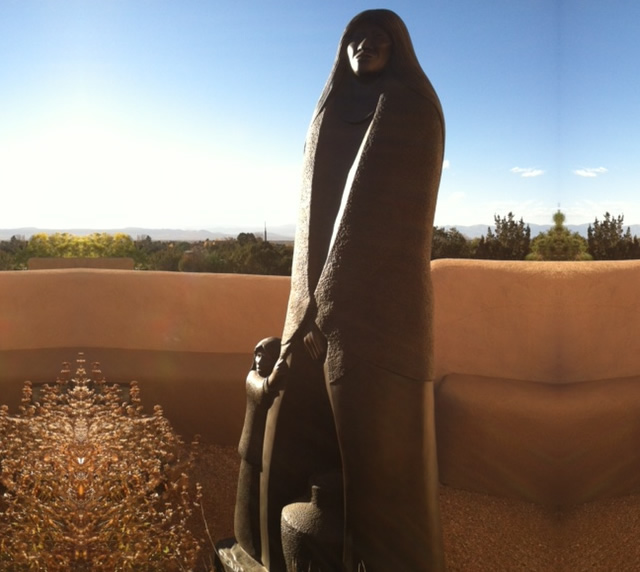
Some mornings I wake and my mind fills with thoughts of tasks to be done and situations to be worried over. Sometimes it is the details of something I am working on that won’t even come due for a month or two. Sometimes the worry comes as I imagine what may happen based upon wisps of information. All that activity as I lie in bed, my body still.
When this happens, I know I must get up and do something to change the thought patterns my mind wants to cling to. I come to my yoga practice, not to just stretch my hamstrings, but, more importantly, to reduce the agitation of my mind, for it is the activity of my mind that is causing my discomfort.
I have come to the conclusion that the hardest thing in yoga is not putting the body into a particular yoga pose, challenging as that can be. Rather, the hardest thing is calling the mind from its incessant roaming to inhabit the body – to move the mind from a state of agitation, or what is sometimes called “monkey mind,” to a place of balance.
Patanjali gave us the Yoga Sutra to help us to achieve a focused, uncluttered, peaceful mind. Even as we focus on postures, which is where most people first begin yoga, we learn that the root of the word asana – the Sanskrit word for postures – expresses the idea of being fully present in one’s body, “inhabiting, existing, living in it.” In addition, certain qualities must be brought to the posture to help us be fully present: sthira, meaning firmness, stability, as well as “attention and mental stillness;” sukha, meaning ease, comfort, relaxed, “without excessive force.”
What allows us to explore and attain these qualities in our practice of postures is the breath. Its subtle rhythm and sound alerts us when we use too much force and the breath becomes labored and rough. It also helps the mind to settle as we focus on the soft sound of the throat-sounding or ujjayi breath. In exploring the qualities of sthira and sukha in our practice, we are preparing for the deeper, more internal practices of of breath control – pranayama – and meditation.
Yoga is about change: moving the agitated or dull mind to a clear and balanced place. When we do this we have the possibility of achieving or attaining something we couldn’t do before, like being stable in a balancing pose, or kind to a neighbor who previously had irritated us, or reducing sugar in our diet, or starting a meditation practice.
I believe our work with breath practice, pranayama, can be one of the most powerful tools for creating positive change. It is also recommended that as we move through our middle years and on that we spend more time in our pranayama practice, and in our later years more time in meditation for which our breath practice prepares us.
That is why I am offering a workshop called “Breath as a Path to Change: Exploring Pranayama.” Please join me on Saturday, February 20 from 1 – 4 pm to learn about, explore and experience how pranayama can create positive change for us. You will find a flyer for this workshop by clicking on Breath as a Path to Change: Exploring Pranayama – or register by visiting www.themovementcenter.net.
Breathe Smooth As Silk
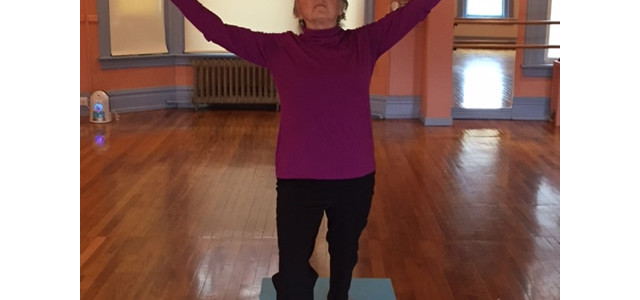
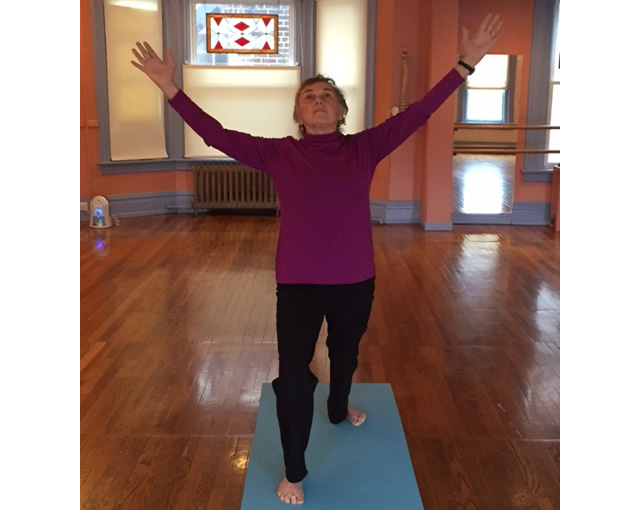
Unless we have a cold, bronchitis, asthma, pneumonia or another condition that shortens our breath or makes it uncomfortable, we usually don’t think about it. Breathing just happens. Our body goes right on taking in air, sustaining our life, just as it did from the moment we emerged from our mother’s womb.
What makes our breathing apparatus so fascinating to me is that it is both involuntary and voluntary. Our body continues to breathe even when we pay no attention. Yet, we can change our breathing patterns in quite profound ways, if we choose.
Because the experience of stress is so ubiquitous in our culture, I encourage people to pay attention to how their breath responds when they feel stressed. Inevitably they will say their breath becomes shorter and sometimes irregular while their bodies tense and anxiety rises. When a waterfall of hormones initiates the flight or fight response, all aspects of our system react.
When we come to understand the concept of prana in yoga, we can understand why we pay such a high price for a stress-filled life, and, also, how the tools of yoga help to mitigate the effects of stress.
Prana is vital, life force energy; it functions in the most subtle aspects of our systems. “Prana… is responsible for all movement in the body and directly influences our physical, mental, and emotional health,” according to Nicolai Bachman in The Path of the Yoga Sutra. It is the means by which our mind influences the body, and the body the mind. Making sure prana can move freely and smoothly so our body feels stable and relaxed and our mind is calm is one reason we do yoga.
Our breath influences prana. That is how the breath influences the state of our mind. And, as our mind influences our breath, like when we are frightened or overwhelmed, prana is affected. When our breathing becomes irregular or shortened, our life force energy is interrupted or blocked.
The fourth limb of yoga, pranayama, is the conscious control and regulation of the breath. These breathing practices can help balance, slow, and smooth the breath, which affect prana, helping to calm the mind and relax the body. They can counteract the negative impact of stress if the practice is appropriate for our body, and we perform it consistently over time.
One caveat is the strong effect that pranayama can have on the breath and nervous system. Consequently, it is important to learn pranayama from an experienced teacher.
Saturday, February 20, from 1:00 – 4:00 pm, I am offering a workshop entitled “Breath as a Path to Change: Exploring Pranayama.” If you would like to learn more about and experience pranayama, please join me for what I believe will be an engaging and enjoyable afternoon.
You can learn more about workshop by clicking here – Breath as a Path to Change: Exploring Pranayama – or register by visiting www.themovementcenter.net.
A Beautiful Garden

All of us have been touched by the acts of terrorism in the world, the shootings in our city, drug use and violence that reaches into all our neighborhoods. The images and vivid reporting of these events weigh heavily on the minds and emotions of many of us, creating fear, sadness, anger, and often despair.
Both last year and this year, I have designated the donations given by those participating in the Yoga for the Winter Solstice class I teach to go to the Harrisburg Peace Garden Foundation. It seems especially appropriate this year to make this contribution.
If you have walked along Riverfront Park north of Maclay Street, you are familiar with the Harrisburg Peace Garden. You have seen the beauty of its flowers, the inspiring words of world figures carved into the stones resting among the plantings, the poignant sculptures along the beautiful Susquehanna. The garden was created in 1990 by the Harrisburg/Hershey Chapter of Physicians for Social Responsibility and the City of Harrisburg. The Peace Garden Fund was established to make sure the garden is preserved and maintained for future generations. The garden truly is a living monument honoring our interconnectedness with nature, with other cultures, with one another, and with generations to come.
Visually it moves us away from the images and soundbites that can draw us toward hopelessness. Instead it garners our attention, moving our focus to its colors, textures, and messages, and renews a sense of faith that we can live in harmony with the earth, other nations, and one another. It assures us that as we have peaceful hearts we bring greater peace into the world.
Yoga teaches that when we are suffering, we need to move our focus away from what causes our discomfort and towards its opposite. The opposite of violence is peace. In the candlelight of our Yoga for the Winter Solstice class we have the opportunity to pause in the midst of the holiday season’s busyness and honor both the quiet aspect of the winter season and the lighter energy it promises will come. As we seek lives of harmony and peace through yoga practice, it also seems right to let the visual reminder of the Peace Garden stand as a metaphor for what we wish to bring into our hearts.
I invite you to join me for Yoga for the Winter Solstice on Wednesday, December 16 at 5:45 pm at TMC wellness through movement, 2134 N. 2nd St., Harrisburg.
Learn more about Harrisburg’s Peace Garden
Deer Dancer
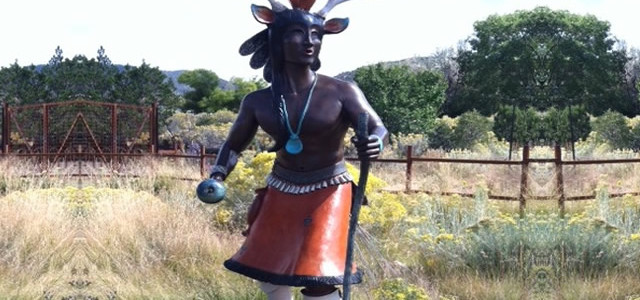
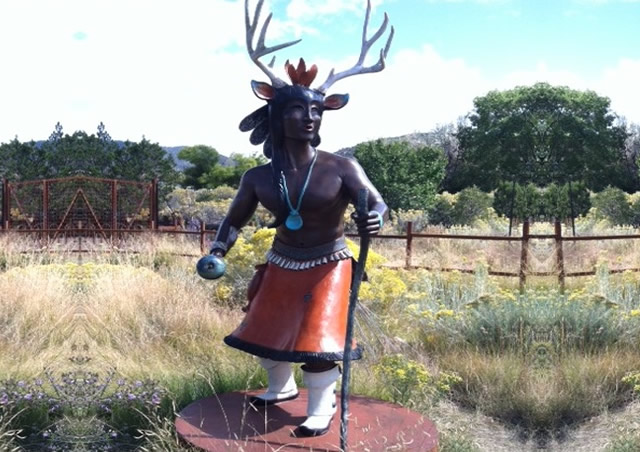
In our New Mexican travels Jim and I return to the Santa Fe Botanical Garden, sitting in the shadow of the Sangre de Cristo mountains. This year it has been the site of a sculpture exhibition entitled The Power of Place, where sixteen works of Santa Fe artists sit among the pinons and roses, the switchgrass and apache plume, the junipers and the cholla, to name only a few of the varieties of plants to be found there.
Most striking of the sculptures for me is the one pictured here, entitled Re-Awakening by Estella Loretto of the Jemez Pueblo. This bronze sculpture is the figure of a Pueblo Deer Dancer and stands over seven feet in height.
The words of the artist evoke for me the teachings of yoga, and the image of the deer dancer resonates with and moves me. I share their wisdom and beauty with you.
The artist entitled her reflections “THE RE-AWAKENING OF THE INNER HEALING.”
To honor and respect the sacredness of life
Taking the opportunity to realign yourself
Focusing only on your highest potential
Letting the rhythm of your breath guide you
As you venture with prideful purpose and total heart
Empowered by self-knowledge and intuition
Letting wisdom guide you from illusion
Sharing universal harmony
In the magic of synchronicity through prayer
Letting the winds bathe your soul
And nourish your spirit.
Meditation For You
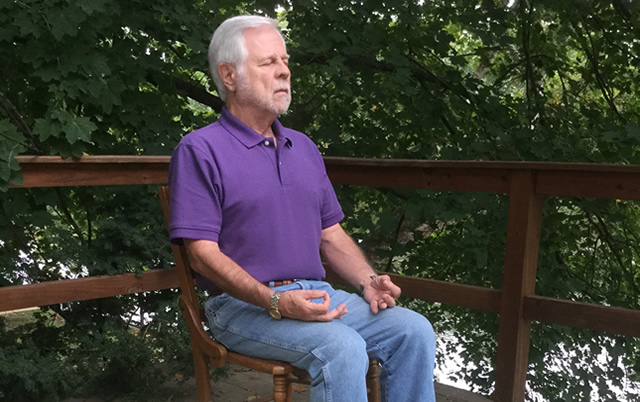
Everyone can meditate with the correct preparation. Whether it is to quiet our busy minds, enhance our physical health or transform physically, yoga meditation can move our minds so change is possible. In this workshop we will learn and
experience:
- what, why, and how meditation works
- simple practices to prepare the body and mind
- how to apply meditation in your everyday life
1:00-4:00pm
TMC Wellness through Movement
2134 North Second St.
Harrisburg, PA 17110
Cost: $40, TMC members; $45, non-members.
Pre-registration required.
Contact TMC at
info@themovementcenter.net, call 717-238-0357, or visit www.themovementcenter.net.

